
Asterivora fasciata is a species of moth in the family Choreutidae. It is endemic to New Zealand and has been found at Arthur's Pass. The larvae of this species have been reared on Celmisia densiflora and adults are on the wing in January.
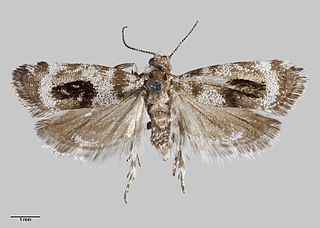
Asterivora inspoliata is a species of moth in the family Choreutidae. It is endemic to New Zealand and has been found in the southern parts of the South Island. Adults are on the wing in December and January.
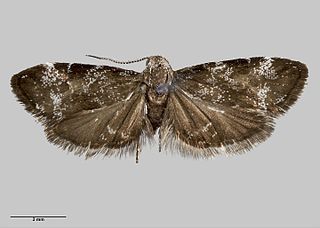
Asterivora tristis is a species of moth in the family Choreutidae. It is endemic to New Zealand and has been observed in Tongariro National Park. Adults of this species are on the wing in January.

Orthenches semifasciata is a moth of the family Plutellidae. It is endemic to New Zealand.

Heterocrossa literata is a moth of the Carposinidae family first described by Alfred Philpott in 1930. It is endemic to New Zealand.

Tingena is a genus of the concealer moth family (Oecophoridae). This genus is endemic to New Zealand.
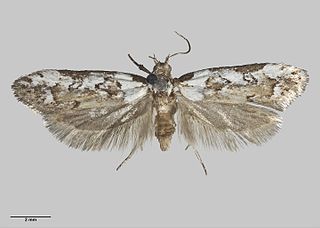
Trachypepla festiva is a moth of the family Oecophoridae and was first described by Alfred Philpott in 1930. It is endemic to New Zealand and has been collected in the northern parts of the North Island.
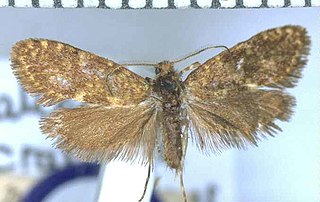
Mallobathra is a genus of moths belonging to the family Psychidae, and are bagworm moths. This genus was first described by Edward Meyrick. It is endemic to New Zealand. The type species of this genus is Mallobathra crataea.

Orthenches chartularia is a moth of the family Plutellidae first described by Edward Meyrick in 1924. It is endemic to New Zealand and can be found in the North and South Islands. This species inhabits open grassy areas in native subalpine forest. Adults are on the wing in January and February.

Orthenches chlorocoma is a moth of the family Plutellidae first described by Edward Meyrick in 1885. It is endemic to New Zealand and has been observed in the North and South Islands.

Orthenches dictyarcha is a moth of the family Plutellidae first described by Edward Meyrick in 1927. It is endemic to New Zealand and has been observed at Arthur's Pass and at Hollyford Valley in Fiordland. It is one of the larger species in its genus and is similar in appearance to O. homerica. Its preferred habitat is beech forest and adults are on the wing in January.

Orthenches disparilis is a moth of the family Plutellidae first described by Alfred Philpott in 1931. It is endemic to New Zealand.
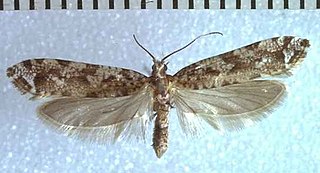
Orthenches homerica is a moth of the family Plutellidae first described by John Salmon in 1956. It is endemic to New Zealand.

Orthenches prasinodes is a moth of the family Plutellidae first described by Edward Meyrick in 1885. It is endemic to New Zealand.
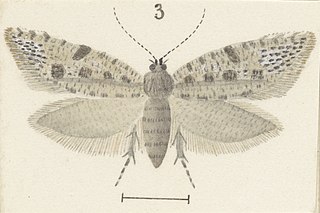
Orthenches saleuta is a moth of the family Plutellidae first described by Edward Meyrick in 1913. It is endemic to New Zealand.
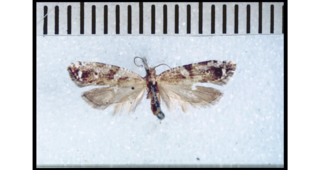
Orthenches similis is a moth of the family Plutellidae first described by Alfred Philpott in 1924. It is endemic to New Zealand.

Orthenches vinitincta is a moth of the family Plutellidae first described by Alfred Philpott in 1917. It is endemic to New Zealand.
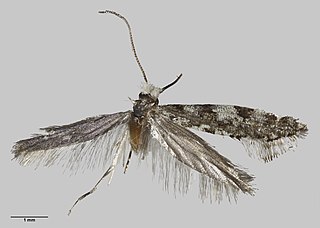
Tinea furcillata is a species of moth in the family Tineidae first described by Alfred Philpott in 1930. However the placement of this species within the genus Tinea is in doubt. As a result, this species may be referred to as Tinea (s.l.) furcillata. This species is endemic to New Zealand.
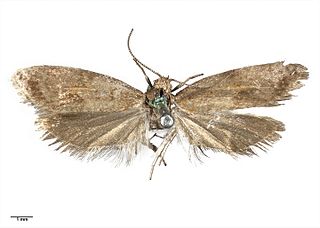
Maoritenes modesta is a species of moth in the family Tortricidae first described by Alfred Philpott in 1930. This species is endemic to New Zealand.

Trachypepla is a genus of moths of the family Oecophoridae. It was circumscribed in 1883 by Edward Meyrick. The species within this genus are indigenous to Australia and New Zealand.




















